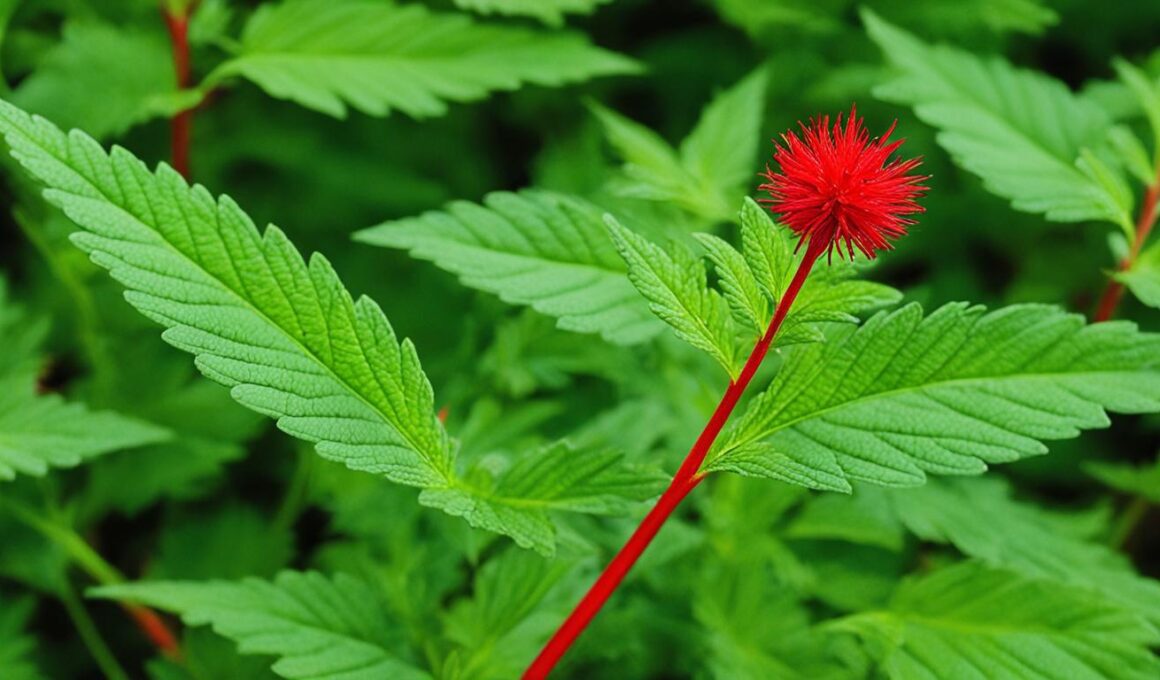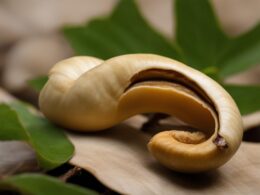Are you struggling to identify a weed with red stems in your garden? Understanding the causes behind these red stems and finding effective ways to manage them is essential for weed control and maintaining a healthier lawn. In this comprehensive guide, we will provide you with valuable tips and tricks to help you identify and manage red-stemmed weeds, ensuring a greener and more vibrant garden.
Whether you are an experienced gardener or a novice, dealing with red-stemmed weeds can be a challenge. But fret not, we have all the information you need to tackle this issue head-on. From natural causes of red and purple stems to nutrient deficiencies and imbalances, this guide covers it all.
But why is it important to identify and manage weeds with red stems? Well, not only can they impact the aesthetic appeal of your lawn, but they can also compete with your desired plants for vital nutrients and resources. By understanding the underlying reasons for their appearance and implementing effective solutions, you can regain control of your garden and enjoy a healthier, weed-free space.
So, if you’re ready to learn how to identify, manage, and control weeds with red stems, continue reading our guide. We’ll provide you with expert advice and practical solutions to help you achieve a beautiful and thriving lawn.
Natural Causes of Red and Purple Stems
Red and purple stems in cannabis plants can have natural causes. As plants mature, it is normal for them to develop reddish or purplish hues on their stems, especially during the flowering stage. This coloration is a sign of healthy plant development and not a cause for concern.
Additionally, genetics play a role in the color variation of cannabis stems, with some strains known for their vibrant colors. Temperature fluctuations, particularly cooler temperatures during the night, can also contribute to red or purple stem coloration. Lighting intensity, such as exposure to high-intensity lighting or specific light spectrums, can affect stem color as well.
Understanding the natural causes of red and purple stems in cannabis plants is essential for growers. By recognizing that these color variations can occur due to plant maturity, genetics, temperature fluctuations, and lighting conditions, you can avoid unnecessary worry and focus on nurturing your plants. In the next section, we will explore nutrient deficiencies and imbalances that can contribute to red and purple stems.
Nutrient Deficiencies and Imbalances
Nutrient deficiencies and imbalances can cause your cannabis plants to develop red and purple stems. It’s important to understand the specific deficiencies that can lead to this discoloration and take appropriate measures to address them.
Phosphorus Deficiency
Phosphorus deficiency is a common cause of red and purple stems in cannabis plants. This deficiency can also result in darkening and curling of the leaves, reduced flowering, and slow overall growth. To combat phosphorus deficiency, ensure that your plants are receiving an adequate supply of phosphorus through a balanced nutrient solution.
Magnesium Deficiency
Magnesium deficiency is another culprit behind red and purple stems. Along with stem discoloration, magnesium deficiency can cause interveinal chlorosis (yellowing between leaf veins), leaf curling, and overall poor plant health. To address this deficiency, consider supplementing your plants with a magnesium-rich fertilizer or adjusting your nutrient solution to include sufficient magnesium.
Potassium Deficiency
When cannabis plants lack sufficient potassium, they can develop red or purple stems, along with other symptoms like leaf curling, necrosis (tissue death), and poor bud development. To prevent potassium deficiency, ensure that your plants are receiving an appropriate amount of potassium through their nutrient solution or by using potassium-rich organic amendments.
Calcium Deficiency
Calcium deficiency can manifest as red or purple stems, along with leaf curling, stunted growth, and blossom end rot (darkening and rotting of the blossom end of fruits). To address calcium deficiency, provide your plants with a calcium-rich nutrient solution or consider adding calcium supplements to your growing medium.
In addition to these specific nutrient deficiencies, other imbalances in essential nutrients like nitrogen, sulfur, or zinc can also contribute to stem discoloration. It’s essential to maintain a balanced nutrient solution and ensure that your plants are receiving all the necessary nutrients in the appropriate amounts.
Effective Solutions for Red and Purple Stems
If you notice red and purple stems in your plants, there are several effective solutions you can implement to address this issue and promote a healthier garden. One crucial step is to monitor and adjust environmental conditions such as temperature and lighting. By ensuring optimal levels, you can prevent or reduce stem discoloration.
Another important solution is to provide a balanced nutrient solution. Make sure your plants receive adequate amounts of phosphorus, magnesium, potassium, and calcium. These nutrients are essential for addressing deficiencies and imbalances that can cause red and purple stems. Remember, maintaining the appropriate pH range is also crucial.
Alongside environmental and nutrient management, consider practicing integrated pest management (IPM) techniques. Regularly inspect your plants for pests and use physical barriers to deter them. If necessary, apply organic pesticides to manage pest infestations effectively.
Furthermore, it is essential to maintain a clean grow space. A clean and well-organized environment not only helps prevent diseases but also ensures optimal plant health. Additionally, you can strengthen your plants’ immune system by boosting beneficial microorganisms, using silicon supplements, providing optimal lighting, and enhancing air circulation.
Are Red-Stemmed Weeds Harmful to Your Garden?
Red-stemmed weeds can be harmful to your garden by competing for nutrients and water with your vibrant red garden plants. They can also overshadow your desired plants, impacting their growth. Regular weeding and mulching can help control these intruders and protect the health of your garden.










